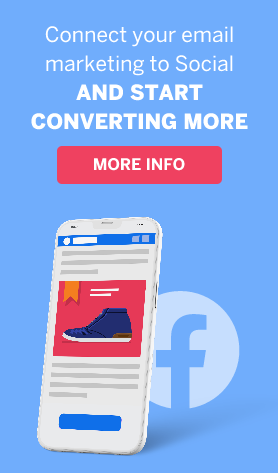B2B companies and Start-ups: Here’s how to create an automation for a webinar! How to use ActiveTrail’s automation system – article #3
An important activity that combines marketing with guidance, used by companies to help customers and potential customers get to know them better, is the webinar. Holding a webinar, live instruction about your system and its main characteristics, with Q&A opportunities during it or afterwards, is a critical activity for any system or start-up geared to businesses.
The webinar can save you hundreds of calls to your support center (if you have one), and show how user-friendly your system is. Besides that, it’s an excellent way to present your ingenious features to the public so everyone will be informed about what you have to offer.
So after all you’ve invested in building your webinar (a very worthwhile investment), won’t it be a shame if no one comes to watch it?
The webinar automation is one of the simplest to implement and this automation process may also give you ideas for other automations that operate the same way, combining emails with landing pages and reminders.
These are the recommended steps to include in a webinar invitation automation:
Step #1 Webinar invitation email
When the webinar in question deals with a subject that may be relevant to your entire mailing list, go ahead and send it to everyone – anyone it might interest.
An invitation email has to be exciting but also very informative, and include all the important details you want your invited guests to know.
This invitation email from FYI eMarketer is a nice example of a webinar invitation email:
In the email itself, tell a little about what you’re going to teach or explain in the webinar why it’s worthwhile to participate, what your customers will gain from it, and , of course, don’t forget to write the time and date.
NewsCred also made a nice invitation email:
You can also create the webinar only for questions and answers and prepare a prerecorded guide, as in the case of UXPin:
Step #2 – A landing page for signing up
As you probably noticed in the previous examples, the email itself must contain a link for signing up for the webinar. A click on the link will lead your recipients to a targeted landing page that you built especially for the webinar (and which you can, of course, embed in other places, like Facebook posts or campaigns of one sort or another), containing fields for signing up for the webinar.
On the landing page you can ask those signing up relevant questions such as their position, where they’re from, the size of the company they work in, and other details that can help you make your webinar successful.
This is how it looks in eMarketer’s landing page for the webinar:
The Pitney Bowes Company also made a landing page like that:
Step #3 – Confirmation and thanks-for-signing-up email
Right after a sign-up form for the webinar is submitted send the submitter a confirmation and thanks-for-signing-up email. In this email, detail exactly what your registered guests have to do in order to participate in the webinar and go over the relevant details of the webinar, such as what topics will be addressed, date and time, and what to do or where to click in order to participate.
We’ll continue with the example of eMarketer’s automation for the webinar it held, and its thanks-for-signing-up email:
Step #4 – [optional] an additional marketing email to those who didn’t sign up
If you want to market your webinar a little more aggressively, resend the first invitation email you sent to all those who didn’t sign up, this time with a different subject line, possibly with a reminder that this is the last chance to sign up.
Step #5 – Reminder email
Now you keep sending emails only to those who signed up, to remind them about the webinar so none of them miss it! You can send reminders a week before, a day or two before, and on the day of the webinar – the important thing is that everyone remembers and that customers who already expressed their desire to participate in the webinar and signed up – don’t miss out.
And now – the moment you’ve been waiting for has arrived! Your webinar is taking place.
After your webinar, you could send a satisfaction survey and suggest that your customers who signed up participate in the next webinars you’ll offer.
Pay attention to a few more important notes:
*You’ve now created a webinar mailing list of people who are interested in and enjoy participating in this type of activity. You may be able to use this information in the future and of course for your next webinars.
*You can use this automation for invitation and marketing of additional events as well, online and offline!
*A webinar is a great tool for B2B companies – don’t hesitate to use it!
In order to see how to build the automation through our system at ActiveTrail, go to inspirations for building automations and learn exactly how it’s done.
Read about additional automations we recommend for B2B companies.









